EM3050 Activity: Testing the Health of Our Rivers
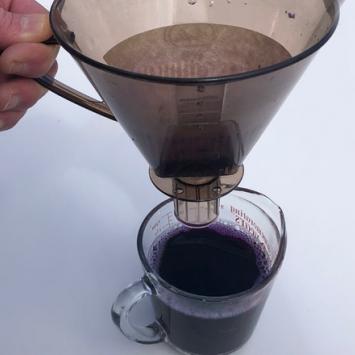
The quality of the water in our rivers and streams reflects the health of our whole watershed’s ecosystem. Clean rivers are a must for healthy, sustainable aquatic life and for enjoyable, safe recreation.
OARS has been doing water quality testing of our rivers using a team of Citizen Scientists for nearly three decades. The results are used by local, state and federal agencies when making policies to help our rivers become healthier.
One thing we have been measuring is the acidity of our rivers to answer the question: Are they too acid, or are they not acid enough? Just like humans, the creatures and plants that live in the rivers like it “just right” for their daily lives, for their eggs and young, and for their general health. For example, our beautiful wild Eastern brook trout thrive in a pH range of 5.0-7.5. A pH of 7 is “neutral” while less than 7 is more acidic and more than 7 is more basic.
Where does acidity come from? It can come from rain, decaying leaves, industries and wastewater, and other sources. It can be balanced out by minerals in rocks that are very “basic”—that is, they neutralize acidity—like limestone. When the rain in Massachusetts became acid, mainly due to pollution from coal-burning power plants, it had an acidity of pH 4.2-4.4 and it killed many plants and animals and corroded our water pipes. Testing our waters for acidity provided proof of the impact of acid rain on rivers and streams. It also proved that rain is no longer acid thanks to cleaning up the air pollution from coal-burning power plants over the past 30 years!
OBJECTIVES
To learn about water quality in the Sudbury, Assabet, and Concord Rivers and become a citizen scientist by testing the pH of water from our rivers or streams.
MATERIALS
Red cabbage
Knife
Boiling water
Coffee filters
Large glass bowl
6 small glass bottles or glasses
Ammonia (NH3)
Baking soda (sodium bicarbonate, NaHCO3) Vinegar (acetic acid, CH3COOH)
Seltzer water (carbonic acid, H2CO3)
Bleach (NaClO)
Water from a river, stream or pond near your home
ACTIVITIES
Research Water Quality in the Sudbury, Assabet, and Concord Rivers
- Learn about the water quality monitoring on our three rivers.
- Research the health of our rivers and why they received a Grade of B in their first-ever River Report Card.
- What are the threats to our rivers and how can you take action?
- What you can do to prevent stormwater pollution?
Cabbage pH Indicator Experiment
Red cabbage contains a pigment molecule called flavin (an anthocyanin). This water-soluble pigment is also found in apple skins, plums, poppies, cornflowers, and grapes. Very acidic solutions will turn anthocyanin into a red color. Neutral solutions result in a purplish color. Basic solutions appear in greenish-yellow. Therefore, you can determine the pH of a solution based on the color that it turns the anthocyanin pigments in red cabbage juice.
- Chop the cabbage into small pieces until you have about 2 cups.

- Place the cabbage in a glass bowl and add boiling water to cover the cabbage. Allow at least 10 minutes for the color to leach out of the cabbage.
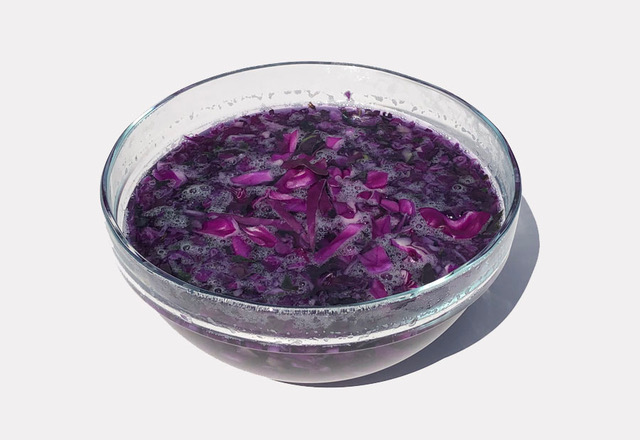
- Filter out the plant material to obtain a red-purple-bluish colored liquid. This liquid is at about pH 7. The exact color you get depends on the pH of the water.
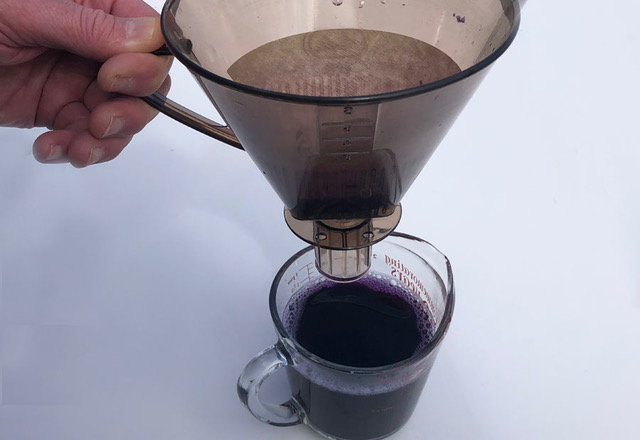
- Pour about ¼ cup of your red cabbage indicator into each glass.
- Add various household solutions to your indicator until it changes color. Use separate containers for each household solution—you don't want to mix chemicals that don't go well together (that can be dangerous).
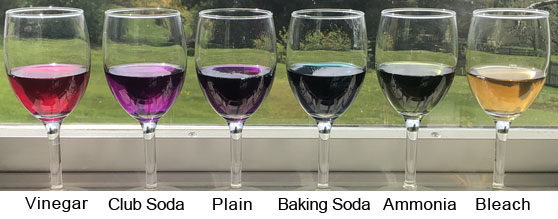
- Add some water from your local river, stream or pond and see what color the cabbage juice turns? What is the pH? Is it healthy for fish?
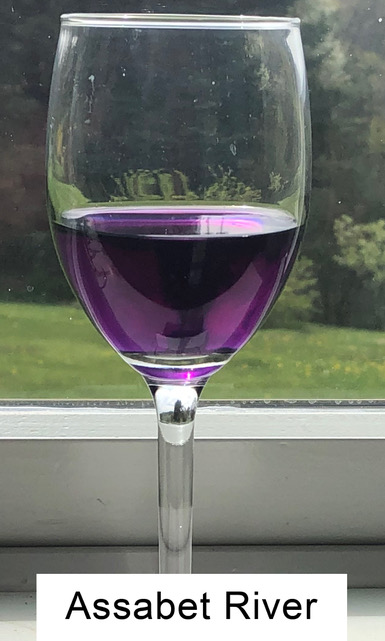
Share your photos, journal pages, thoughts, experiences, and/or feedback with us! Post on social media with hashtags:
#umbrellaarts #musketaquid #concordearthday #musketaquidearthday #earthday3050
Or email Caroline at caroline@theumbrellaarts.org
Special thanks to our Earth Month sponsors







